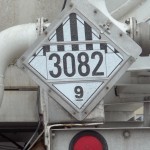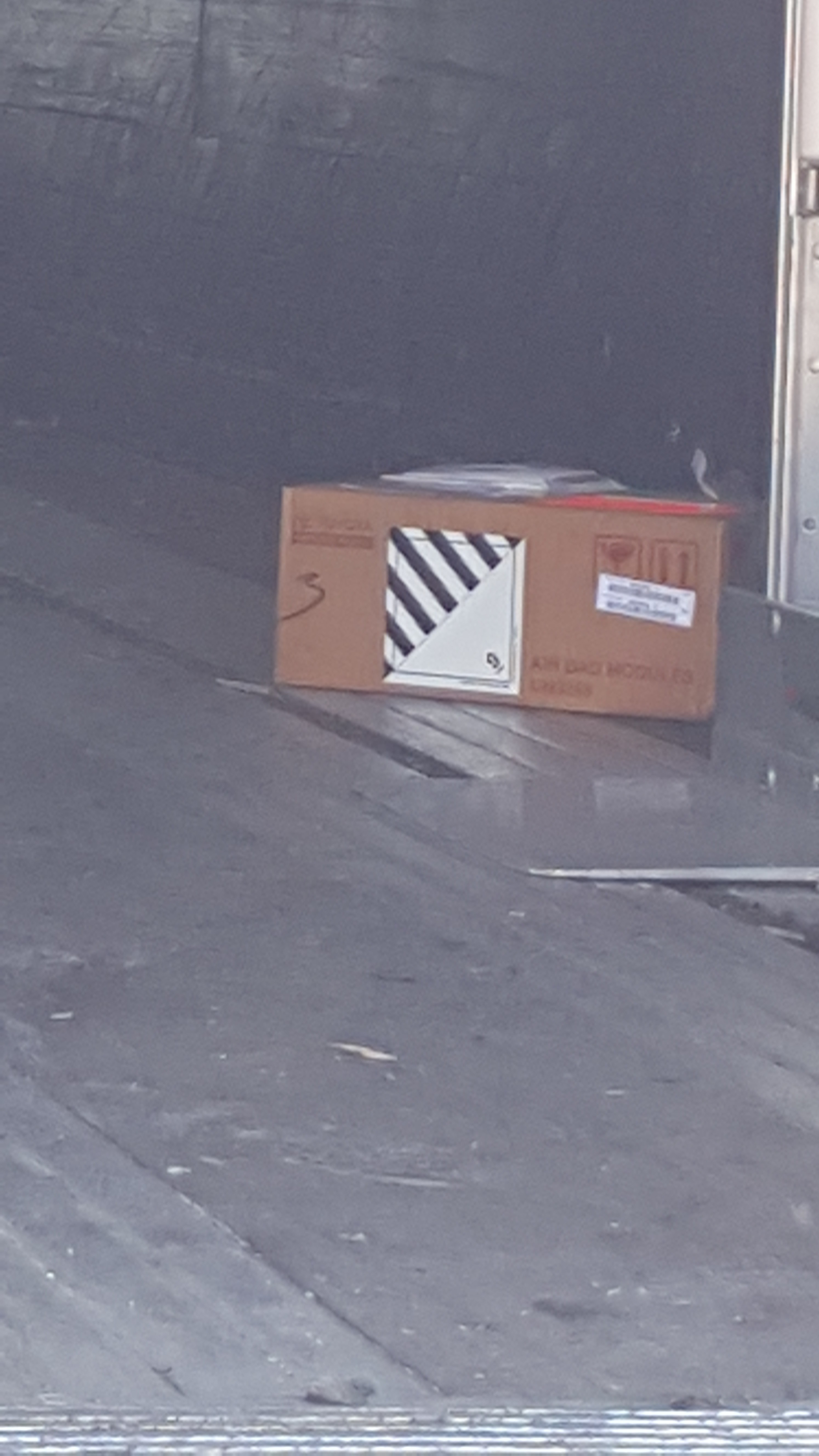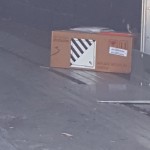All hazardous materials subject to the regulations of the Pipeline and Hazardous Materials Safety Administration (PHMSA) within the USDOT must be classified as one or more of the nine hazard classes – or a division of a hazard class – identified at 49 CFR 173 subpart C (for Class 1 Explosives), subpart D (for hazardous materials other than Class 1 Explosive and Class 7 Radioactive), and subpart I (for Class 7 Radioactive). while most hazard classes/divisions have very specific definitions based on their potential hazards, i.e. flash point, rate of corrosion, lethal dosage, &etc, one hazard class is deliberately vague in its definition. Its vague definition results in the hazard class being applicable to many materials that might not normally be subject to the Hazardous Material Regulations. It is hazard class 9 Miscellaneous, and the subject of this article.
Hazard class 9 is defined simply at 49 CFR 173.140:
For the purposes of this subchapter, miscellaneous hazardous material (Class 9) means a material which presents a hazard during transportation but which does not meet the definition of any other hazard class. This class includes:
(a) Any material which has an anesthetic, noxious or other similar property which could cause extreme annoyance or discomfort to a flight crew member so as to prevent the correct performance of assigned duties; or
(b) Any material that meets the definition in §171.8 of this subchapter for an elevated temperature material, a hazardous substance, a hazardous waste, or a marine pollutant.

The definition of a class 9 Miscellaneous can be divided into three sections, summarized below and addressed separately in this article:
- The first paragraph identifies the limits of a class 9 HazMat and then leads into the following two paragraphs with “This class includes:”
- The second (paragraph a) identifies what materials may be class 9 based on their potential hazards in transportation.
- The third (paragraph b) identifies the materials that may be class 9 if they meet a specific definition at 49 CFR 171.8.
- A fourth method not found in the definition of class 9 Miscellaneous are those hazardous materials in class 9 based on their classification in the hazardous materials table.
1. Limits of Class 9 Miscellaneous:
A class 9 Miscellaneous presents a hazard during transportation.
But…
Does not meet the definition of any other hazard class.
The first part of the definition, “…presents a hazard during transportation.” is hard to pin down and, I believe, is PHMSA/USDOT’s way of saying that a class 9 can’t be a non-hazardous material since PHMSA/USDOT doesn’t regulate the transportation in commerce of non-hazardous materials. So, logically, it must present some kind of a hazard during transportation, though the definition doesn’t indicate what kind of hazard.
The second part of this paragraph provides more guidance. It clearly states that a class 9 Miscellaneous can not meet the definition of any other hazard class. Therefore, any material that meets the definition of hazard classes 1 through 8 cannot be a class 9 (LOI 06-0033).
The paragraph ends with, “This class includes:” which means that the conditions that follow do not replace or supersede those of the first paragraph. Rather, the two following paragraphs are meant to assist in identifying those materials that can be a class 9 if the conditions of first paragraph have been met; i.e. “presents a hazard…doesn’t meet the definition of any other hazard class…”. Also, though not clear in its language, it seems clear to me – and confirmed in a conversation with the HazMat InfoLine – that what follows in the two remaining paragraphs of §173.40 is not necessarily descriptive of all HazMat that may be included in class 9. It merely describes the conditions that make inclusion in class 9 possible.
Like this article? Subscribe to my Monthly Newsletter No marketing emails! |
2. Materials Included in Class 9 due to Their Properties:
Any material that is:
- Anesthetic. That is: a substance that induces insensitivity to pain.
- Noxious. That is: harmful, poisonous, or very unpleasant.
- Or other similar property. That is: well, your guess is as good as mine.
But having those above properties is not enough, the material must also have the potential – even if it doesn’t actually in fact – to cause extreme annoyance or discomfort to a crew member of an aircraft so that they are not able to do their job.
 The key term used in this definition is, “flight crew member” which means that for this definition to apply to a HazMat it must be transported by aircraft. Therefore, a material that is anesthetic, noxious, or has some other similar property which could cause extreme annoyance or discomfort to a flight crew member but is transported by highway, rail, or vessel is not subject to this definition (LOI 05-0113). It may, however, be a class 9 Miscellaneous if it meets the conditions of the third paragraph of §17340 or is classified as a class 9 in the hazardous materials table (see below).
The key term used in this definition is, “flight crew member” which means that for this definition to apply to a HazMat it must be transported by aircraft. Therefore, a material that is anesthetic, noxious, or has some other similar property which could cause extreme annoyance or discomfort to a flight crew member but is transported by highway, rail, or vessel is not subject to this definition (LOI 05-0113). It may, however, be a class 9 Miscellaneous if it meets the conditions of the third paragraph of §17340 or is classified as a class 9 in the hazardous materials table (see below).
Interestingly, a strong odor - such as in a fragrance oil - is not enough to meet the above condition even when transported by air unless it is able to cause extreme annoyance or discomfort to a flight crew member so as to prevent them from doing their job (LOI 03-0267).
Question: What if I have a material that could cause extreme annoyance or discomfort to a flight crew member so they can’t do their job but the quantity of HazMat to be shipped by air is very small (e.g. a 30 mL vial of 10% formaldehyde solution)? Does the low volume effect its classification as a class 9?
Answer: No. The definition of a class 9 miscellaneous is based on the properties of the material and not its quantity. However, such a small quantity of a HazMat may be subject to other exceptions in the HMR (LOI 04-0040).
Interested in a Webinar that covers this topic, and more! |
3. Materials Included in Class 9 due to Their Meeting a Specified Definition:
A class 9 Miscellaneous also includes any material that meets the definition in 49 CFR 171.8 of any one of the following:
- Elevated temperature material
- Hazardous substance
- Hazardous waste generated by a large quantity generator or small quantity generator.
- Marine pollutant
Not sure of your hazardous waste generator status? |
So…
a material may not be listed by name in the hazardous materials table;
it may not meet the definition of hazard classes 1 through 8;
it may not have the potential to cause extreme annoyance or discomfort to a crew member of an aircraft so that they are unable to do their job;
But…
if it meets the definition of an elevated temperature material, a hazardous substance, a hazardous waste, or a marine pollutant, then it must be a class 9 Miscellaneous.
4. More Class 9:
Some hazardous materials (listed below) are classified as Miscellaneous based on their classification in the hazardous materials table. If you intend to ship one of these hazardous materials, it will almost certainly be a class 9:
Acetaldehyde ammonia
Aluminum, molten
Ammonium nitrate based fertilizer
Asbestos
Asbestos, amphibole amosite, tremolite, actinolite, anthophylite, or crocidolite
Asbestos, chrysotile
Aviation regulated liquid, n.o.s.
Aviation regulated liquid, n.o.s.
Aviation regulated solid, n.o.s.
Batteries, nickel-metal hydride sealed, n.o.s. see for nickel-metal hydride batteries transported by modes other than vessel
Battery-powered vehicle or Battery-powered equipment
Battery-powered vehicle or Battery-powered equipment
Benzaldehyde
Blue asbestos (Crocidolite) or Brown asbestos (amosite, mysorite)
Capacitor, asymmetric with an energy storage capacity greater than 0.3 Wh
Capacitor, electric double layer (with an energy storage capacity greater than 0.3Wh).
Capacitor, electric double layer with an energy storage capacity greater than 0.3 Wh
Carbon dioxide, solid or Dry ice
Carbon dioxide, solid or Dry ice
Castor beans or Castor meal or Castor pomace or Castor flake
Chemical kits
Chemical kits
Consumer commodity
Cotton
Dangerous Goods in Machinery or Dangerous Goods in Apparatus
Dibromodifluoromethane, R12B2
Elevated temperature liquid, n.o.s., at or above 100 C and below its flash point (including molten metals, molten salts, etc.)
Elevated temperature solid, n.o.s., at or above 240 C, see §173.247(h)(4).
Engines internal combustion, or Engines, fuel cell, flammable liquid powered
Engines, internal combustion, or Engines, fuel cell, flammable gas powered
Environmentally hazardous substances, liquid, n.o.s.
Environmentally hazardous substances, solid, n.o.s.
First aid kits
First aid kits
Fish meal, stabilized or Fish scrap, stabilized
Hazardous waste, liquid, n.o.s.
Hazardous waste, solid, n.o.s.
Life-saving appliances, not self inflating containing dangerous goods equipment
Life-saving appliances, self inflating
Lithium ion batteries including lithium ion polymer batteries
Lithium ion batteries, contained in equipment including lithium ion polymer batteries
Lithium ion batteries, packed with equipment including lithium ion polymer batteries
Lithium metal batteries packed with equipment including lithium alloy batteries
Lithium metal batteries, contained in equipment including lithium alloy batteries
Lithium metal battery including lithium alloy batteries
Other regulated substances, liquid, n.o.s.
Other regulated substances, solid, n.o.s.
Oxygen generator, chemical, spent
Plastic molding compound in dough, sheet or extruded rope form evolving flammable vapor
Polychlorinated biphenyls, liquid
Polychlorinated biphenyls, solid
Polyhalogenated biphenyls, liquid or Polyhalogenated terphenyls liquid
Polyhalogenated biphenyls, solid or Polyhalogenated terphenyls, solid
Polymeric beads, expandable, evolving flammable vapor
Safety devices, electrically initiated
Self-defense spray, non-pressurized
Sulfur
Sulfur, molten
Vehicle, flammable gas powered or Vehicle, fuel cell, flammable gas powered
Vehicle, flammable liquid powered or Vehicle, fuel cell, flammable liquid powered
White asbestos (chrysotile, actinolite, anthophyllite, tremolite)
Zinc dithionite or Zinc hydrosulfite
Contact me with any questions you may have about the transportation of hazardous materials by air, highway, vessel, or rail International and Domestic Daniels Training Services 815.821.1550 |
Remember: per 49 CFR 173.22 a shipper is responsible for classifying a hazardous material in accordance with the HMR. Hazard class 9 is just one small part of that classification. And the classification is just one small part – though a critical one – of a HazMat shipper’s responsibilities.


